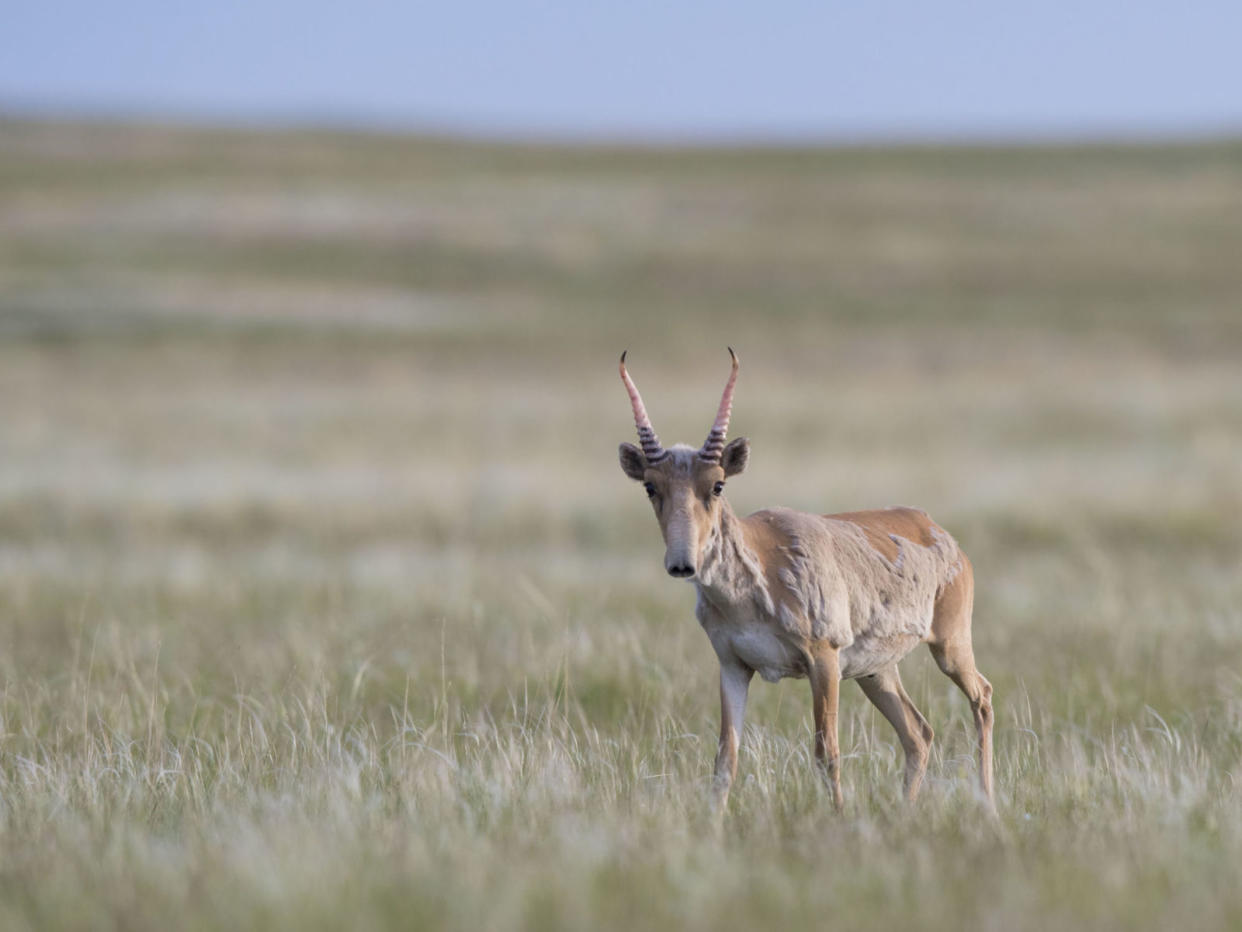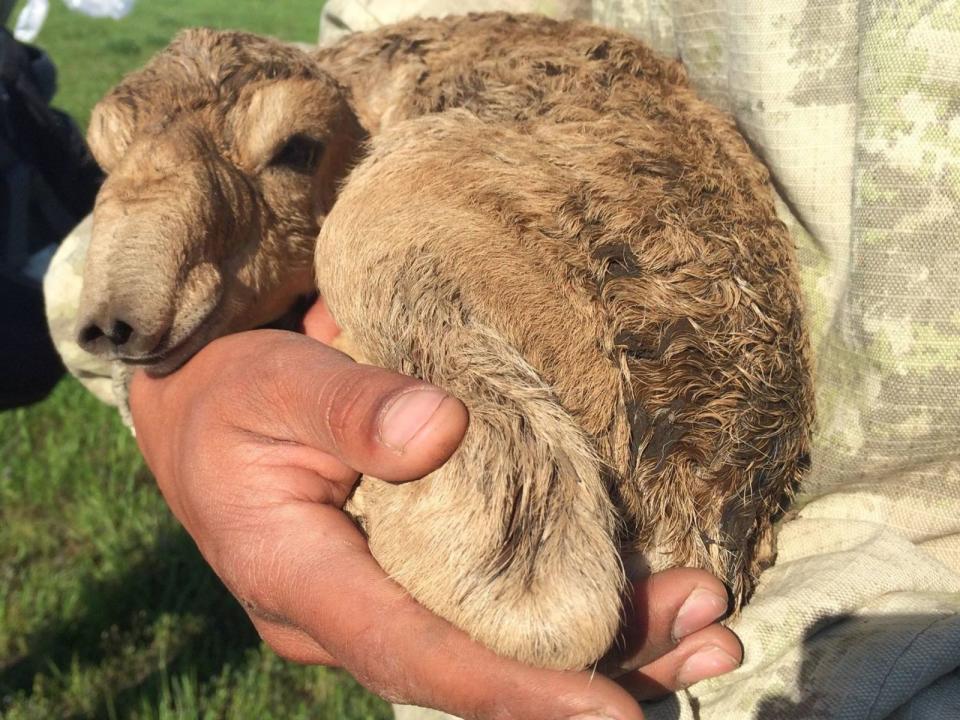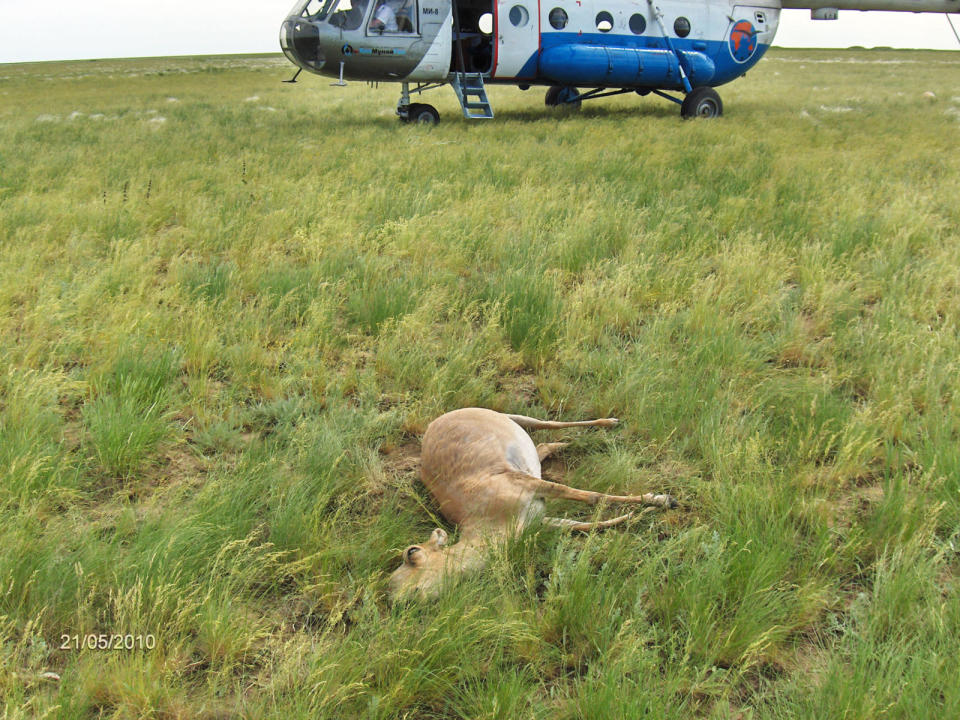How 200,000 antelope suddenly died

Researchers have discovered the cause of one of the most mysterious mass mortality events to occur in the modern animal world.
The world's scientists were baffled in 2015 when 200,000 antelope suddenly dropped dead in Kazakhstan.
More than 60% of the global population of saiga antelope died in just three weeks in May 2015, with entire herds mysteriously collapsing across the Betpak-Dala region of Kazakhstan.
Saiga antelopes are already a critically endangered species, and despite being a cousin species to the springbok and gazelle, is on the cusp of extinction.
Examinations of the dead antelope showed that their deaths had been caused by the Pasturella multocide bacteria, but this did not make sense because the bacteria normally lives quite harmlessly in the tonsils of antelopes.
An international group of interdisciplinary research teams have been investigating the deaths and now believe that a number of separate factors - most of which were harmless on their own - combined to kill the saiga antelopes.

The researchers believe that ultimately the unusual humidity in May and the high air temperatures in the days before the deaths allowed the tonsil bacteria to infect the animal's bloodstream, leading to septicaemia.
The deaths also occurred in May, when the saiga antelopes have their young. Saiga has the largest calves of any ungulate species - an evolutionary necessity allowing their young to quickly run when stalked by wolves.
This physiological stress may have also contributed to making the mothers vulnerable.
Historical weather data revealed similar conditions at the time of two other mass mortality events, one in 1988 and another in 1981.

First author on the research paper, published in Science Advances, Professor Richard Kock of the Royal Veterinary College, said: "The 2015 mass mortality event provided the first opportunity for in-depth study, and a multidisciplinary approach has enabled great advances to be made.
"The use of data from vets, biologists, botanists, ecologists and laboratory scientists is helping improve our understanding of the risk factors leading to mass mortality event - which was beneficial when another mass mortality event occurred, this time in Mongolia in 2017.
"Improved knowledge of disease in saigas, in the context of climate change, livestock interactions and landscape changes, is vital to planning conservation measures for the species' long-term survival."

 Yahoo News
Yahoo News 
